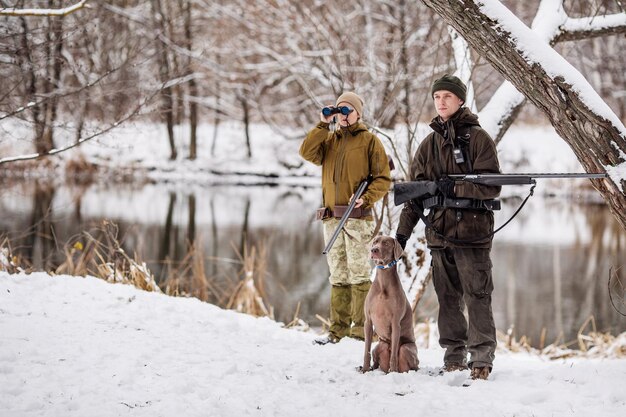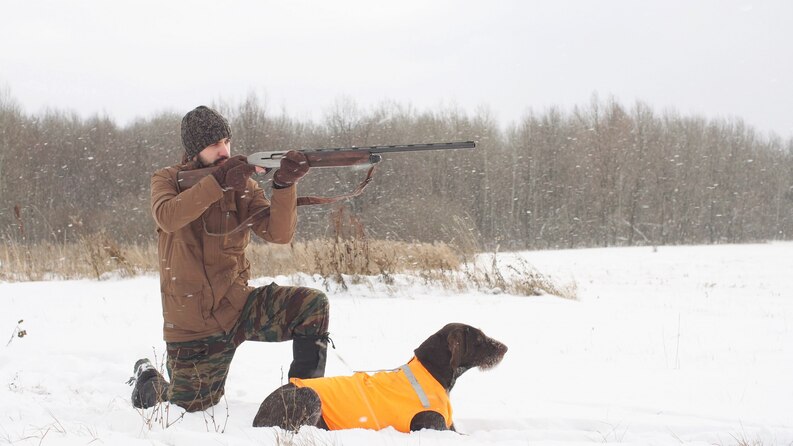Hunting during winter presents unique challenges and opportunities for outdoor enthusiasts. As the landscape transforms with snow and cold temperatures, both the environment and the behavior of wildlife change. To be a successful and responsible winter hunter, there are several key considerations and preparations to keep in mind. This article will explore essential tips and knowledge for hunting during winter, covering topics such as the impact of winter on wildlife, safety measures, gear and equipment, and hunting strategies.

The Impact of Winter on Wildlife
Understanding how winter affects wildlife is crucial for a successful hunt. Winter conditions can impact the behavior, physiology, and movement patterns of animals, and being aware of these changes will help you adapt your hunting strategies accordingly.
Migration and Winter Habitats
Many species of wildlife engage in migration during winter in search of suitable habitats and food sources. Some species, such as waterfowl and songbirds, may migrate to warmer regions, while others, like deer and elk, may move to lower elevations where food is more accessible.
Feeding Patterns
In winter, food can become scarcer for wildlife. As a result, animals tend to concentrate in areas where they can find reliable food sources. These areas might include food plots, agricultural fields, or even natural food sources like acorns and berries.
Energy Conservation
To conserve energy and maintain body heat, animals may become less active and more vigilant. This means that they may move less and spend more time resting, making it important for hunters to patiently scout and wait in strategic locations.
Tracking and Sign
In snow-covered landscapes, tracking becomes a valuable skill. Animal tracks in the snow can provide insights into their presence and movement. Learning to identify tracks and interpret their meaning is essential for tracking and locating game.
Safety Measures for Winter Hunting
Winter hunting poses specific safety challenges due to cold temperatures, inclement weather, and the potential for isolation in remote areas. Staying safe is a top priority, and here are some key safety measures to follow:
Dressing for the Weather
Layering clothing is essential to stay warm and dry. Start with a moisture-wicking base layer, followed by insulating layers, and finish with a waterproof and windproof outer layer. Make sure to wear appropriate cold-weather gear like insulated boots, gloves, and a warm hat.
Hypothermia Prevention
Hypothermia can be a real danger during winter hunts, particularly if you become wet. Be mindful of signs of hypothermia, such as shivering, confusion, and difficulty speaking. Carry extra clothing and gear to stay warm, and know how to build an emergency shelter if necessary.
Communication
Ensure you have reliable communication devices like a fully charged cell phone, a two-way radio, or a satellite messenger. Let someone know your hunting plans and expected return time, so they can raise the alarm if you don’t return as scheduled.
Navigation
Winter conditions can obscure familiar landmarks, so carry a GPS or compass and be proficient in navigation. Know your hunting area well and be able to identify key features even when they’re covered in snow.
Emergency Supplies
Pack a survival kit with essentials like fire-starting materials, a first-aid kit, high-energy food, and a space blanket. These items can be lifesaving if you find yourself stranded in the cold.
Gear and Equipment for Winter Hunting
Winter hunting requires specialized gear and equipment to ensure your comfort, safety, and success. Here are some key items to consider:
Firearms and Ammunition
Cold temperatures can affect the performance of firearms, so make sure your weapon is properly maintained. Be aware of any changes in accuracy and point of impact due to the cold. It’s also essential to keep ammunition dry to prevent misfires.
Optics
Hunting optics like scopes and binoculars can become foggy or covered in snow. Choose optics designed for cold weather use and consider using lens covers to protect them.
Snowshoes and Crampons
Snowshoes are valuable for moving through deep snow, while crampons provide traction on icy surfaces. Depending on your hunting area, having one or both of these tools can be crucial.
Sleds and Toboggans
Dragging a sled or toboggan behind you can help transport game, gear, and supplies. It reduces the physical strain of carrying heavy loads and allows you to bring more equipment.
Cold-Weather Clothing
Invest in high-quality cold-weather clothing, including insulated jackets and pants, thermal layers, and waterproof and windproof outerwear. Don’t forget to wear moisture-wicking socks and insulating boots to keep your feet warm and dry.
Hand and Foot Warmers
Hand and foot warmers can be essential for maintaining warmth in extreme cold. Consider using them, especially if you’ll be stationary for long periods.
Ice Fishing Gear
If you’re hunting near frozen bodies of water, ice fishing equipment can come in handy for cutting through ice to access water or for fishing as an additional food source.
Hunting Strategies for Winter
Adjusting your hunting strategies for the unique conditions of winter is critical to a successful hunt. Here are some strategies to consider:
Scouting
Scouting your hunting area before the season is crucial to identify the winter travel patterns and feeding areas of game animals. Look for tracks, droppings, and other signs that indicate their presence.
Ambush Hunting
Ambush hunting involves waiting for game animals in areas where they are likely to feed or move. Set up in advance, using cover and concealment, and stay still for extended periods to allow animals to come to you.
Still-Hunting
Still-hunting is a slow and methodical approach where you move silently through the woods, stopping frequently to observe and listen for signs of game. This method can be effective for hunting game that is active during the winter months.
Stand Hunting
Tree stands or ground blinds can be strategically positioned in areas where you expect game to pass. This allows you to remain elevated or concealed while waiting for an opportunity to present itself.
Tracking
If you’re skilled in tracking, following fresh animal tracks in the snow can lead you to your quarry. Pay close attention to the age and size of the tracks to determine the potential of a successful hunt.
Late Afternoon and Early Morning
Hunting during the late afternoon and early morning is often more productive during winter, as this is when many animals are most active, particularly when they are foraging for food.
Conclusion
Winter hunting requires preparation, knowledge, and adaptability. Understanding how winter affects wildlife, following safety measures, having the right gear and equipment, and employing effective hunting strategies are all essential for a successful and responsible winter hunt. By embracing the unique challenges and opportunities presented by hunting in winter, you can make the most of this rewarding outdoor activity.











